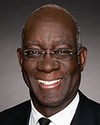Thank you, honourable Chair and committee members. It's a pleasure to speak to you today.
The theme of this is differences in the experiences of women soldiers and veterans. I thought I would begin with a story that can illustrate one of the differences, perhaps more on the trivial side rather than the profound side, as we've already heard some of those differences today.
I am the mental health director of the Women Warriors' Healing Garden. We were founded in about 2017 by me and my partner. I am a civilian, so I cannot speak to experiences first-hand. I can only relay the experiences that have been shared with me and that have been my privilege to listen to. I feel comfortable sharing the experiences of my co-founder, Erin Kinsey.
In about 2017, it was becoming clear that Erin was no longer okay. She had served with the United States Air Force in the late eighties, early nineties, and was injured as a result of her service there. However, it was not immediately apparent to her that this was the case. When she released from the military, she was still in her twenties and she felt fine. They checked her teeth and checked her general health and said, “You're fine.” Then off she went and she came to Canada, went to university, got a Ph.D., got married and got divorced. She did all of those things.
However, when she came to Ottawa in about 2012, it was becoming clear that maybe something was not quite right. By maybe 2015 or so, it was really clear that not everything was okay. Eventually, she was diagnosed with PTSD, and we began the journey of trying to have that injury recognized by Veterans Affairs in the United States. Because she was here in Canada, I think it's fair to say she slipped through every crack that existed. Fortunately, she was eventually connected with a pension and was declared 100% disabled by Veterans Affairs in the U.S.
While she was looking for treatment, she looked around at some of the services that might be available to her. One of the things she found through a friend was an amazing organization that I'll brag about just for a moment—it's not my own—called Project Healing Waters. Their mandate is to get veterans into places where they can do fly fishing. It is an amazing organization where no matter a person's ability or disability, they're able to be transported to a place where they can engage in that activity. This was so profoundly healing for Erin's friend. He described the stream as his church.
However, Erin didn't want to be up to her waist in freezing cold water watching little flies go around while praying that someday a fish might actually strike her line. That was not her jam, so we decided together that we would start a garden because a garden was a place she felt healed. Being with animals was a place she felt healed. There were, even just as recently as 2017, very few services available for women veterans.
We started with a few tools and a small garden plot, and over the past five years we've grown into a couple of acres. We have animals we're able to use for equine-assisted therapy, we have horticulture therapy, we have beekeeping and we have art therapy, both in person and virtually. Of course, we've had to adapt with the pandemic, as everyone has. However, I think the difference in what was available, which was really aimed at the interests of men, was partly about being under-represented, so we like to say that we serve those who are under-represented—women and members of the 2SLGBTQ community.
This is only a small difference. You've heard some of the larger ones with some of the statistics around sexual trauma. Stats Canada estimates that about 25% of women were sexually assaulted as a result of their military service. As Sandra has attested to, that number is probably a vast underestimate. We've heard about some of the physical differences due to things like ill-fitting uniforms, rucksacks and boots.
Perhaps what we have not yet heard about is the difference in rates of PTSD. Women are much more likely to become disabled with PTSD as a result of their service. There's a lot of disagreement in the literature about why exactly this is. It's complex, but it's fair to say that it is probably related to physiological differences, differences in the brain and differences in hormones, but also differences in experiences, including sexual trauma related to combat, sociological differences, harassment and structural differences.
We know that women are more likely to get PTSD. Unfortunately, we are not yet helping them heal as well as we should be. In a study that was done a few years ago, in 1998, the rate of recovery from PTSD for men after two years was about 50%. After five years, essentially 100% of men in this particular study had recovered. In contrast, after five years, only 50% of women had recovered, and after 10 years, when the study ended, only about 55% of women had recovered.
I don't think we know yet why this is exactly, but it is clear that women are different and they are being ill-served by the services and treatments we currently have available. For this reason, we try to offer an environment where people can offer each other peer support and therapeutic activities, in the hope that this may help in a way that is a bit different from what is being done in other places.
We sincerely hope we are able to make a difference in the lives of women. Thank you.



